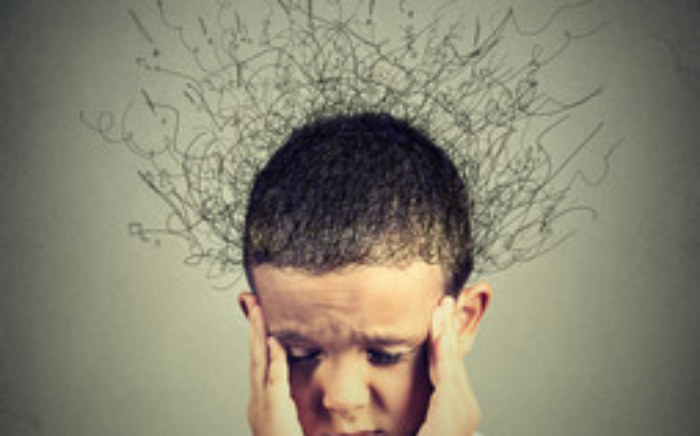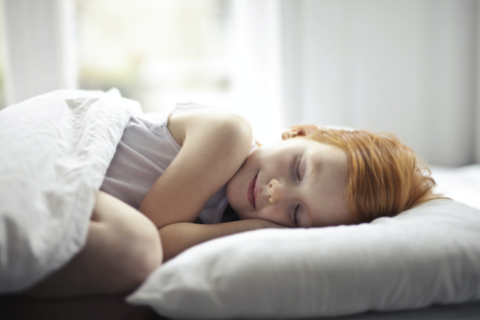Attention–Deficit/Hyperactivity Disorder, better known as ADHD, is a neurodevelopmental disorder that impacts one’s ability to sustain attention and inhibit impulses. According to recent research, ADHD affects 7-11% of school-age children. This adds up to a whopping 129 million estimated children who have ADHD across the globe!
Some of the classic symptoms of ADHD in children include the following:
Inattentive behaviors:
- difficulty remaining focused and/or being easily distracted
- daydreaming
- being forgetful in daily activities
- making careless mistakes
Hyperactive behaviors:
- difficulty remaining seated
- easily “wound up” (e.g., playing roughly, running/bouncing, knocking things over)
- talking loudly and/or excessively
- fidgeting when expected to sit still
Impulsive behaviors:
- difficulty waiting (e.g., in games or conversations)
- interrupting others (e.g., butting into conversations, games, or activities)
- intruding upon others (e.g., grabbing toys from others’ hands, using others’ belongings without seeking permission)
Many of the behaviors associated with ADHD can be irritating and annoying to adults and peers alike. The hyperactive and impulsive behaviors, for example, are often disruptive in settings where appropriate behavior is expected (e.g., school classrooms, libraries, waiting rooms, religious institutions). And with recent needs to go indoors to ensure social distancing during this national health crisis, these disruptive behaviors can further contribute to an already stressed family system. As such, kiddos suffering from ADHD typically receive more criticism and negative attention from their parents, teachers, and peers compared to their neurotypical peers. And a lifetime of criticism can have drastic effects on a child’s self-esteem, social development, and subsequent mental health.
Given the neurological underpinnings of ADHD, it is important to keep in mind that kiddos with ADHD do not engage in the above described behaviors on purpose. So what can you do during quarantine to manage these challenging ADHD behaviors while also bolstering your child’s self-esteem?
The key to this is attention. Your attention (whether it be positive attention or negative attention) is reinforcing, meaning it increases the likelihood that the behavior will repeat itself in the future. With this in mind, the best way to minimize ADHD behaviors is to completely ignore them. We call this active ignoring because we are not passively ignoring the child, but rather consciously removing our attention to their undesirable behavior. What does this look like? Avoiding any reaction (large or small) to the undesirable behavior. This includes making eye contact or a facial expression in response to your child’s misbehavior as well as commenting on the misbehavior. In other words, behave as though nothing is happening.
Active ignoring is incredibly effective in reducing annoying, attention seeking behaviors; however, it requires patience and distress tolerance. Why? Well, if you choose to ignore a behavior that you previously provided attention to, the behavior will get worse before it gets better. Think about a vending machine. What do you do when you put your dollar in and nothing happens? You might press the button 10 more times, start shaking the machine, or even raise your voice… because what worked just about every other time isn’t working in this very moment. So if you start ignoring your child’s interrupting behavior, for example, expect them to raise the volume of their voice, continually repeat themselves, or physically intervene as a way to desperately get your attention.
Does this sound like your child? If so, it is so important that you do the following when behavior escalates in this way. First, as long as your child is safe and not in danger of hurting themselves or someone else, continue to actively ignore any inappropriate behavior. Because if you do provide any form of attention at this very moment, your child will learn that all they have to do is amp up their behavior to get your attention. Secondly, keep an eye out for praiseworthy, non-ADHD behaviors that are the opposite of the problem behavior – we call these positive opposites. The goal is to re-engage with your child as soon as possible when they are taking steps towards desirable behavior as this teaches them an appropriate way to get your attention. So as soon as an ADHD behavior stops, make eye contact with your child with a friendly facial expression and praise the positive opposite, desirable behavior: “I love how you quietly waited for me to finish talking to your sister.”
Children with ADHD are rarely given compliments for their behavior. As such, it is up to us to be detectives and keep a sharp eye out for when children are engaging in appropriate behavior. So while you’re stuck at home with your kiddos during this stressful time, make an effort to catch them being good! Look out for and praise positive opposites to not only increase desirable behavior, but also to help your child feel good about themselves.
Check out the following quarantine-themed labeled praises for positive opposite inspiration:
- Amazing focus during your class Zoom call!
- Thank you for following directions during your bedtime routine.
- I appreciate that you played quietly while I was on the phone.
- Wow! Great job sitting so calmly during homework!
- I love it when you quietly walk like that inside the house.
- Excellent work playing gently with one another!
- I like that you asked so politely. Nice manners!
- Sometimes it’s hard to sit for so long, but you did an incredible job staying seated at the computer!
- This was a complicated assignment. I love that you finished your work!
- Thank you for using an indoor voice while we all work at the table.
- I am so proud of you for waiting patiently while I helped your brother.
References
Children and Adults with Attention-Deficit/Hyperactivity Disorder (CHADD). (2020, February 27). General prevalence of ADHD. https://chadd.org/about-adhd/general-prevalence/
Eyberg, S. M. & Funderburk, B. (2011). Parent-Child Interaction Therapy protocol. Gainesville, FL: PCIT International.










